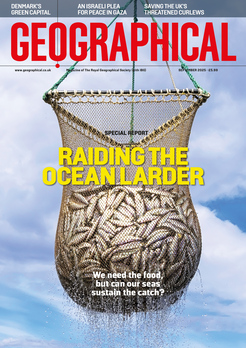
A new study says parts of an ancient planet are buried deep within the core of the Earth after two planets collided billions of years ago
By
A planet ‘eating’ another planet and then spitting a part of it out to create a moon. It sounds like something from a very over-the-top sci-fi film. But, scientists believe that this might have actually happened and what’s more, the hungry planet was our very own!
The first inkling that something odd was afoot occurred in the 1980s when geophysicists were baffled to discover that deep within the core of the Earth were two enormous blobs of material composed of elements that were different to those surrounding it. And when we say that these blobs were enormous, we mean lunar large, with each blob being about double the size of our own moon. One of them is located roughly beneath Africa, and the other below the Pacific Ocean.
They were given the catchy name of large low-velocity provinces (LLVPs), but what they actually were remained a mystery. But now, a study by Caltech (California Institute of Technology) that was published this month in the journal Nature has a theory.
But, before we go any further we need to look at how the Moon was formed. Prior to the Apollo lunar missions in the late 1960s and 70s, it was assumed that the moon was an object captured by the Earth’s gravity as it floated past, or that the Moon formed alongside the Earth from debris caused by giant objects crashing into one and other during the formation of the solar system. However, when scientists studied lunar rock brought back by the Apollo missions, they were able to conclude that the Earth was a bit older than the Moon and that the Moon was actually created after an ancient planet dubbed Theia, crashed into the Earth and flung enough molten and vaporised debris up into space to create the Moon.
With this in mind, we can look again at the blobs buried deep within our planet. The Caltech team have suggested that when Theia smashed into the Earth, the resulting debris didn’t just create the Moon but that the two blobs embedded deep within our planet are actually giant chunks of the planet Theia.
To come up with their conclusions, the multidisciplinary team who worked on the report modelled different scenarios for Theia’s chemical composition and its impact with Earth. These simulations backed up the theory that the collision could have led to the formation of both the giant blobs (LLVPs) and the Moon. The suggestion is that some of Theia’s mantle became mixed with the Earth’s own mantle where it eventually clumped and crystalised together to form the mystery blobs below Africa and the Pacific.
Related articles:




